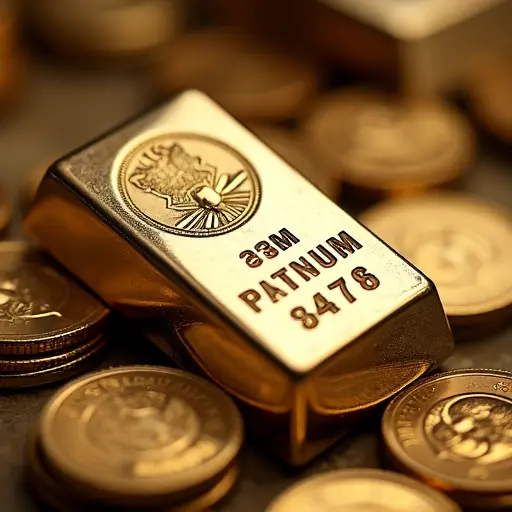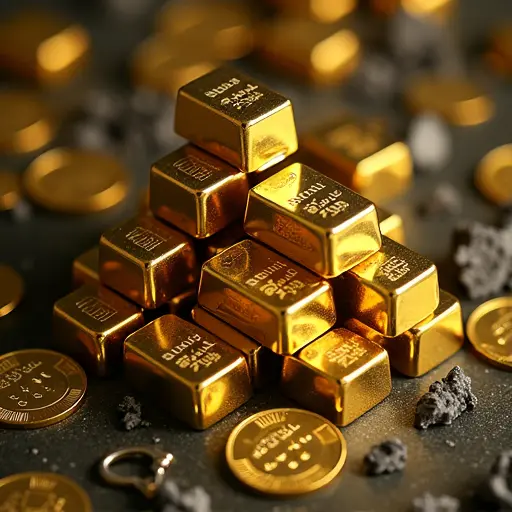China's central bank continues gold purchases for strategic diversification, but local communities in gold-rich Zhaoyuan face economic hardship due to state control and new taxes hitting small jewelers.

China's Strategic Gold Accumulation
China has been on an unprecedented gold-buying spree, with the People's Bank of China purchasing gold for eleven consecutive months as of 2025. This strategic accumulation comes as gold prices reached record highs, driven by global market uncertainties and trade tensions. According to the World Gold Council, China added 5 tonnes of gold to its reserves in January 2025 alone, bringing its total holdings to 2,285 tonnes.
The central bank's gold purchases serve multiple strategic purposes. 'By accumulating gold reserves, China aims to reduce its dependence on the US dollar and enhance financial security amid geopolitical uncertainties,' explains financial analyst Li Wei. This de-dollarization strategy positions gold as a non-sovereign, politically neutral reserve asset that can hedge against currency volatility and trade disruptions.
The Irony of Zhaoyuan's Golden Wealth
While China benefits nationally from its gold strategy, the story is dramatically different in Zhaoyuan, the city officially designated as China's 'Gold Capital' since 2002. Located in Shandong province, Zhaoyuan sits atop China's largest gold ore concentration area with proven reserves exceeding 5,800 metric tons, accounting for 35% of national reserves according to industry reports.
The region's gold industry generates billions in annual revenue, but local residents see little of this wealth. 'All the mines are now controlled by state-owned enterprises, and local people have almost no involvement in the mining operations anymore,' says local resident Zhang Ming. This represents a stark contrast to earlier decades when local communities could benefit from gold discoveries through connections with local authorities.
Tax Reforms Hit Small Businesses
The situation worsened in November 2025 when China implemented new tax regulations targeting the gold market. As reported by Reuters, these changes eliminated key tax exemptions for retailers, disproportionately impacting small jewelers and traders.
In Zhaoyuan's bustling jewelry district, shop owner Mrs. Wang describes the challenges: 'The gold price is too high, and now with increased taxes, I have no choice but to pass some of these costs to customers.' She notes that while high gold prices benefit investors, they're devastating for jewelers as ordinary Chinese consumers cut back on luxury purchases amid economic uncertainty.
Tourism as Economic Diversification
In response to the economic challenges, local authorities have turned to gold tourism as an alternative revenue source. The city now features a massive gold museum and themed village complete with streams where visitors can pan for gold—though the experience is more symbolic than profitable.
Tour guide Lin, who distributes gold pans to visitors, admits: 'You can still find glittering stones in the stream, but no real gold. People come here to learn about the gold industry and have fun, but if you want to make money from gold, this isn't the place.'
Global Context and Future Outlook
China's gold strategy reflects broader global trends. Central banks worldwide purchased record amounts of gold in recent years—1,037 tonnes in 2023 following 2022's record 1,136 tonnes—signaling a fundamental shift away from traditional dollar-denominated assets. As analysis shows, the key question remains how much gold constitutes sufficient diversification for China's massive foreign exchange reserves.
For Zhaoyuan's residents, the future remains uncertain. While the national strategy strengthens China's financial position, local communities continue to seek ways to benefit from the golden resources beneath their feet. The disconnect between national prosperity and local hardship highlights the complex challenges of resource-based economic development in modern China.

 Nederlands
Nederlands
 English
English
 Deutsch
Deutsch
 Français
Français
 Español
Español
 Português
Português









